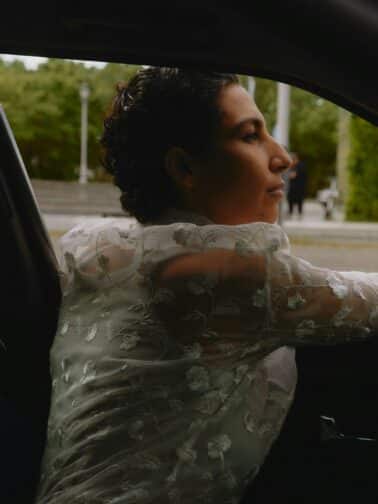TL;DR –The fundamental lessons of healthy boundaries and relationships that therapists teach adults are often the same ones we should have learned as toddlers—and today's children's books are teaching these concepts beautifully. Through board books about consent, physical boundaries, and relationship navigation, young children are learning that their body autonomy matters, that friends can have different boundaries and still care about each other, and that conflict in relationships is normal and workable. Books like "C Is For Consent" teach that boundaries aren't all-or-nothing but can be shaped with nuance (a handshake instead of a hug), while "Making Friends" by Fred Rogers acknowledges that relationships involve disagreement but are worth the effort.
What strikes most powerfully is how these simple lessons—you get to decide who touches your body, people have different needs and that's okay, differences should be celebrated not feared—are exactly what many adults are learning for the first time in therapy after childhoods that didn't honor these truths. Whether you're reading these books to a child or recognizing your own need to learn what you missed, it's never too late to internalize these boundary basics that support mental health and self-esteem throughout life.
Sometimes I think that so much of the work of therapy is just a repeat of the key lessons we would have ideally learned as toddlers.
These days, I’ll work 9-5 in my new home office (aka soundproofed garage, COVID-inspired), seeing clients and refining the lessons in the course’s videos and bonuses.
Lessons meant to educate (and re-educate) about key mental health issues such as holding boundaries, seeking out healthy relationships, responsible communication, and coping with big, hard feelings.
Then I’ll come inside to spend the evening with my daughter. And, inevitably, her first words of greeting to me include “Book! Book, MOMMY, BOOK!” (All while making the baby sign for “book” and racing into the living room towards the bookshelf – it’s adorable.)
We’ll settle into the armchair in the living room with a stack of board books beside us. And all of that content I just repeated to clients and highlighted in the course lessons will be reflected. Right back to me in some of her currently-cherished books.
So, today, five days from the launch of my signature course – “Hard Families, Good Boundaries: A step-by-step online program to feeling good no matter who is in your life” – I want to take an opportunity to highlight a few of the key lessons from my toddler’s current favorite books in case you’d like to supplement your own child’s mental health-friendly bookshelf, or in case you’d like a refresh of these great boundary lessons yourself.
Please, keep reading with me.
So, first, let me go on the record and say that I’m a lifelong bibliophile. I deeply, wholeheartedly love books. Especially children’s literature.
I think children’s books are formative, magical, and can influence a person’s life long after childhood ends. Incidentally, my daughter is actually named after a character in a children’s book. That’s how much I love children’s literature.
So, years ago and through my pregnancy in 2018, one of the things I was most looking forward to was reading books to my daughter. Sharing with her the same magic and wonder that I experienced in the pages of books when I was growing up.
She’s not quite old enough to appreciate some of my all-time favorites. She’s only 20 months old right now. But I’m delighted that I’m being exposed to new and different books that are age-appropriate for her right now.
And I’m further delighted that so many of the excellent books on the market and on her bookshelf are so psychologically empowering and mental health-affirming! Indeed, most of the books I’m going to list here in this post are newer publications. But one is older and a book of mine from childhood.
However old you are, whether or not you have children or grandchildren, or whether you want to be a parent or not, I hope that you will appreciate a peek into some of the children’s books I’m admiring. I hope you’ll deepen the lessons by joining me in my forthcoming course, but more on that later.
Lessons About Boundaries and Relationships Learned From My Toddler’s Bookshelf.
Without further ado, here is a small sampling of the books on my toddler’s bookshelf. These have some wonderful boundary and relationship lessons that we could all benefit from.
Curious if you come from a relational trauma background?
Take this 5-minute, 25-question quiz to find out — and learn what to do next if you do.
START THE QUIZ1. C Is For Consent by Eleanor Morrison and illustrated by Faye Orlove.*
I love this book so much. I love it because of the diverse race, sexuality, and differently-abled representation of characters and family iterations within the board book pages. And I also love it because it’s a terrific lesson on how boundaries – especially physical boundaries – are critical and that you’re never too young to learn them.
I love, too, that this book teaches that, as much as it’s important for a young child to decide if someone can touch their body, it’s important, too, that they learn to ask for consent before touching other peoples’ bodies.
Finally, I love that there is nuancing about boundaries in this book. When the main character – a little boy named Finn – is deciding whether he wants to hug a family friend who gave him a present, he can decide between being hugged, not being hugged at all, or picking some different options like a fist bump, a high five, etc..
It’s a great reminder that boundaries are not “all or nothing” – there’s room for nuance and for scoping and shaping the frame, form, and frequency of contact as we navigate relationships with others and hold our personal boundaries.
2. Will Ladybug Hug? By Hilary Leung.*
This is a great little book with bright, colorful illustrations that teaches a very important boundary lesson: the people close to us may have different boundaries than us and that’s okay.
It’s possible to be friends with someone who has different needs and wants than you and that doesn’t mean the relationship has to end. It just may look different than it does with other friends.
In the case of this book, a gregarious, social little ladybug wants to hug her friends as she leaves for a tropical vacation. Some of her friends are open to hugs, but one of her friends is decidedly not open to it.
What I love is that this book depicts really common dynamics in daycare and preschool settings: there may be gregarious, social, affectionate children who want to hug and hold hands with each other and that’s okay. But not every child in that group may feel that way. They may want space and not want their body touched and that’s also okay.
It’s a wonderful reminder that you can still be friends with someone who has different boundaries with you and you can accommodate them in a group setting to help everyone get their needs met without anyone feeling other and left out for having different needs and wants.
3. Making Friends by Fred Rogers.*
Yes, that Fred Rogers. Mister Rogers. Did you know he has a series of children’s books called the “First Experiences Series”? They’re wonderful books from the 1980s with timeless lessons and surprisingly progressive and inclusive representation, ideologies, and, in true Mister Rogers’ fashion, compassion, empathy, and dignity and regard for the child.
We have several from this series that were actually mine from the 1980s and the one that I particularly love for the relationship and boundary lessons it contains is the “Making Friends” book. It’s my daughter’s favorite, too (I think we may have read this book upwards of 200 times this summer so far…).
What I love about this book is that it reminds young readers of a critical relationship lesson: it’s not always easy to agree on how you want to do things with another person.
In fact, it’s often easier to play alone because sometimes when you try to play with someone else, you two may disagree. There may even be fights. But if you can find a way to negotiate your different needs and wants and find a way to play together, the play can often be richer.
It’s a terrific reminder that conflict is inevitable in relationships and that even with friends, boundaries may be crossed and it’s okay to have big, hard feelings about that (and the book showcases how young kids can get help around those big feelings). And it’s a perennial reminder, too, that relationships are not always easy, but they sure are worthwhile.
(Side note: for any of my elder Millennial peers, you, like I, will probably love seeing our childhood, primary-colored fashion choices reflected back to us in these pages. OshKosh B’Gosh, anyone?)
4. Antiracist Baby by Ibram X. Kendi and illustrations by Ashley Lukashevsky.
This wonderful board book came out this June and it’s a terrific resource for any of us looking to raise actively antiracist children.
The bold, vibrant illustrations are beautiful and the lessons in the book will help provide form and frame to any conversations about race that you have with your children.
And I think that so many of the principles that help us and our children become actively antiracist are evergreen relationship lessons, too.
Primarily, one of the biggest lessons of this book is that differences in all forms should be celebrated, uplifted, and supported – not denigrated. This applies to race, of course!, and to so many other variances in who we are and how we live. Moreover, this book highlights the fundamental lesson that when we embrace differences, we widen our world and deepen our relationships.
As the founding father of Gestalt psychotherapy, Fritz Perls would say, “Contact is the appreciation of differences.” And as one of Esalen Institute’s co-founders, Dick Price, would add to Fritz’s comment, contact is also “the recognition of similarities.”
Antiracist Baby highlights this fundamental relationship lesson: recognizing how we’re similar and appreciating our differences is what it means to be in a healthy relationship. And if we can apply this on the micro-level in our friendships and on the macro level with racism, we and the world will benefit.
Learning Childhood Boundary Lessons Through Adult Therapy
When you sit across from your therapist wrestling with why you can’t say no to your mother’s invasive questions or why you freeze when someone crosses your physical boundaries, you’re often discovering that the lessons in these toddler board books—”your body belongs to you,” “different people have different boundaries,” “it’s okay to disagree”—were never taught, modeled, or honored in your childhood home. Your therapist becomes, in many ways, the patient teacher helping you learn at thirty, forty, or sixty what others absorbed at three.
The therapeutic process involves not just understanding boundaries intellectually but practicing them in the safety of the therapy relationship itself. Your therapist models consent by checking in before challenging you, respects your “no” when you’re not ready to explore certain topics, and demonstrates that how boundaries impact every area of your life from your anxiety levels to your relationship satisfaction. Through this consistent modeling, your nervous system begins to learn what it feels like to have boundaries honored—perhaps for the first time.
What makes this work both humbling and hopeful is recognizing that you’re literally rewiring neural pathways that should have been established in early childhood. When your therapist celebrates your first successful boundary with a difficult family member, they’re offering the same pride and validation that a parent might show a toddler learning to say “no thank you” to an unwanted hug. This isn’t regression; it’s reclamation of developmental experiences you deserved but didn’t receive.
The beauty of learning these lessons as an adult is that you bring conscious awareness to the process. Unlike toddlers who absorb these lessons implicitly, you can understand why boundaries matter, recognize patterns in your boundary struggles, and actively choose to practice new ways of being. Your adult brain’s capacity for insight combined with your therapist’s attunement creates the conditions for profound change, proving it’s never too late to learn what every child deserves to know: you matter, your needs are valid, and you get to choose how others interact with your body, time, and energy.
Wrapping up.
So there you have it. Four wonderful books that teach and affirm some key boundary and relationship lessons framed in ways that help even the youngest among us learn and grow more esteemed and healthy.
As much as we work to support our own children and the young people in our life to learn key relationship and boundary lessons to support their own self-esteem and mental health, please know that it’s never too late to learn (or re-learn) what you may have missed out on in order to create a beautiful, thriving adulthood for yourself.
Here’s to healing relational trauma and creating thriving lives on solid foundations.
Warmly,
Annie
*PS: While these are affiliate links, please know I’d never promote something I didn’t love and didn’t believe could benefit you.





